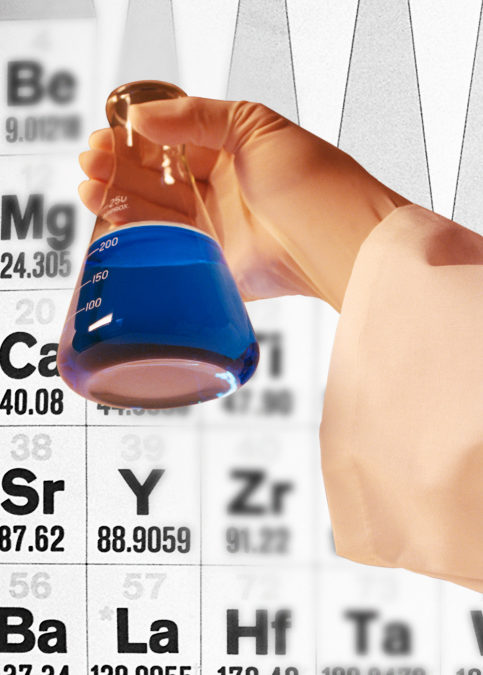Not all chemicals are potentially hazardous, but some can be. Toxins are defined as consumables (eaten, drank, inhaled, absorbed through skin) which are not used or needed by the body. An average person’s exposure to any one toxin is low, but when we are bombarded with them – it can become a burden on our body to get rid of them. Our bodies are designed to expel toxins, but when our exposure increases and the rate which we absorb them is greater than the rate our bodies can excrete them, our immune system can become overwhelmed. When this happens over a long duration, we become more vulnerable to chronic illness.
Are you exposed to increasing toxins in your environment? The facts are that today’s environment is increasingly inundated with toxins – think pesticides in soil, chemicals in water, contaminants in air, and that doesn’t even factor what has happened to our food supply (heavy metals, genetic modifications, hybridization, etc.) Some of the more worrisome environmental toxins are flame retardants, formaldehyde, parabens, BPA, and pesticides.
Despite that our bodies are designed to expel toxins, limiting our exposure where we have some control is a wise strategy to keep our distance from ill health.
Flame Retardants
Because of strict flammability standards, most furniture has been built with flame retardant chemicals – think sofas, chairs, cars, plane seats, even infant car seats. The worry is that some of the chemicals (at a molecular level) will end up on our hands, and eventually on our faces, mouths, and bodies. The most worrisome chemical for infants is PBDE (poly-brominated diphenyl ethers), which are fat-soluble and can enter the brain during development. The concerns are lower IQ and a shorter attention span, hormone dysregulation (thyroid disorders) and cellular disruption (DNA damage) .Children crawling on all fours in the carpet may be more exposed to this chemical dust (molecular level). Some of the more toxic chemicals are phased out over time, so it is not a bad idea to replace old furniture and carpets. Other ideas to mitigate this problem include regular vacuuming with a HEPA filter vacuum, replacing upholstery on chair cushions, and washing hands before eating. More out of the box thinking has shown that sweating helps the body force out chemicals, so it’s yet another reason to break a sweat – even if you use a sauna or infrared blanket to force perspiration.
Formaldehyde
It is found in wood glue, hence also in furniture and flooring. High concentrations of formaldehyde have been linked to respiratory issues, headaches, and nosebleeds. It may cause nose, throat, and eye irritation and trigger asthma attacks. In 2011, formaldehyde became classified as a human carcinogen after studies linked it with nose cancer and myeloid leukemia. If you are installing new wood flooring in your home, be sure to air out the product before, during, and after installation. Be advised that some hair treatments utilize formaldehyde (ie Brazilian blowouts), but a few times per year should be within acceptable levels.
Parabens
Parabens are in many sunscreen and cosmetic products, usually listed under butylparaben, methylparaben, propylparaben, or Alkyl parahydroxy benzoates. Exposure to parabens can increase our risks of certain cancers and chronic illnesses according to several studies. Science has also verified that parabens can cross the placenta cord, so we have to caution against using excessing personal products and READ labels carefully. Seek healthier alternatives and ditch the chemicals.
BPA
That chemical that is still found in some plastics which could be hiding in your containers, water bottles, canned goods, and kitchen appliances. Don’t heat food in plastics – even if labelled BPA free. We can’t control all things, but what we are able to minimize goes a long way. the chemicals that we do absorb or consume can be detoxed naturally. The simple act of sweating also helps the body get rid of BPA, so you are encouraged to do more “sweating” daily!
Pesticides
Our agricultural industry is simply trying to make ends meet and work within safety levels for all of us, BUT there is always a window of time that it takes for studies to drive a point home and inspire change. In that window of time, we’re being exposed to organic pollutants in our food supply. Some of these are endocrine disruptors, and they have shown to increase our risk of thyroid issues as well as Type 2 Diabetes. The best way to minimize our exposure is to buy organic for at least the dirty dozen lists.
Resources
- International Agency for Research on Cancer(17 June 2011). “Agents Classified by the IARC Monographs, Volumes 1 – 102” (PDF). Lyon, France: International Agency for Research on Cancer. pp. 3, 19. Retrieved 11 November 2011.
- Hathaway GJ, Proctor NH, Hughes JP, and Fischman ML [1991]. Proctor and Hughes’ chemical hazards of the workplace. 3rd ed. New York, NY: Van Nostrand Reinhold.
- Blood, urine, and sweat (BUS) study: monitoring and elimination of bioaccumulated toxic elements, https://www.ncbi.nlm.nih.gov/pubmed/21057782
- Human excretion of bisphenol A: blood, urine, and sweat (BUS) study,https://www.ncbi.nlm.nih.gov/pubmed/22253637
- Human elimination of phthalate compounds: blood, urine, and sweat (BUS) study , https://www.ncbi.nlm.nih.gov/pubmed/23213291
- Human elimination of phthalate compounds: blood, urine, and sweat (BUS) study. https://www.ncbi.nlm.nih.gov/pubmed/23213291
- Genuis, Stephen J., Kevin Lane, and Detlef Birkholz. “Human Elimination of Organochlorine Pesticides: Blood, Urine, and Sweat Study.” BioMed Research International2016 (2016).
- Arsenic, cadmium, lead, and mercury in sweat: a systematic review,https://www.ncbi.nlm.nih.gov/pubmed/22505948
- Human Excretion of Polybrominated Diphenyl Ether Flame Retardants: Blood, Urine, and Sweat Study, https://www.ncbi.nlm.nih.gov/pmc/articles/PMC5360950/;
- Personal care product use among adults in NHANES: associations between urinary phthalate metabolites and phenols and use of mouthwash and sunscreen, https://www.ncbi.nlm.nih.gov/pubmed/27168391
- Chronic exposure to organochlorine compounds and health effects in adults: diabetes and thyroid diseases , https://www.ncbi.nlm.nih.gov/pubmed/20677670



